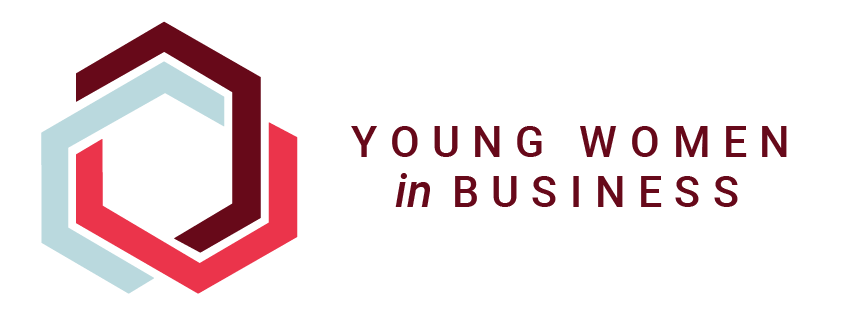All Personal Series: Nodding doesn't guarantee listening – so, what does?
/YWiB Toronto has partnered with Roxana, Founder of bespoke training and coaching agency All Personal, for a blog series written by her. She helps individuals (re)discover and work-out their personal skills ‘muscles’, so they increase their self-awareness and improve their confidence, impact, relationships and, ultimately, quality of life. This series will provide insight into how you can do the same, and ideally walk away with tips, tricks, and advice that you can apply to your own life and career.
She trains and coaches executives, business owners and professionals on practical techniques that they can easily use and apply in any area of their life, with a strong focus on communication (verbal and non-verbal), change, feedback, presenting & speaking, team & self management, teamwork, leadership.
Roxana is a TEDx speaker, a certified coach and trainer, and a Learning & Development professional. She holds a diploma in Learning & Development and a certificate in Human Resources from the Chartered Institute for Personnel and Development in the UK, as well as a Master of Arts in Knowledge, Information and Project Management from the University of Bucharest, Romania.
‘No, that’s not what I meant’, or ‘You’re not listening to me’, or ‘I’ve just told you that’. Familiar?
Why does this happen, when all we did was listen? We thought we were listening, because we were nodding our head over and over again, humming as well, and even maintaining eye contact.
So why is it then that, at some point in the conversation, we get this feedback that we weren’t, in fact, listening. What is listening and what makes it so difficult?
First off, we tend to treat listening as this passive thing we do (or don’t have to do?) when the other is talking. We look at it as ‘let them talk, while I can think about my ‘groceries shopping list’’.
The brain is busy thinking about the next actions we need to take, even when we don’t want it to. This is how, especially when we think we don’t have to do anything, we’re always busy thinking about something.
One of the most difficult things to achieve is to clear our minds, not think about anything, and those of you who meditate or ever tried to, perfectly know this feeling. Because there’s always a buzz, a hum, a thought, a fraction of an action hidden right there, in a corner of our mind.
That’s how, instead of listening to what the other is saying, we’re busy trying to decipher our own thoughts all the while.
Second, we prefer to tell our story rather than listen to someone else’s. Why? Because when I’m telling my story I’m more involved, I recreate the events, which makes me also re-experience some of the feelings, which, in turn, makes me so involved in the story.
When another person tells us their story, it’s more difficult to get involved, we’re strangers to that story and it takes time to get a grip of what it is about. And unless the story teller makes it engaging (but that’s another story), we find ourselves thinking ‘shopping lists’ all over again.
The ‘shopping list’ is our metaphor for everything else we’re thinking about: what am I going to respond to what they’ve just said now (which is already what they just said a while ago, because I don’t know what they’re saying now anymore, as I’m thinking about what I am going to say); piles of work, night out with friends, things I need to start doing right after reading this article, you get the picture.
Third, we’re human. We can only focus for a little while, because we cannot help but pay attention to everything that’s going on around us. Yes, focus is the opposite of attention. Focus requires a lot of effort and us pushing every distraction aside. Focus happens especially when we’re in flow, ‘in the zone’, because that’s when we’re engaged, involved, motivated.
Focus means I zoom in to you while you’re speaking, without paying attention to who comes in the room, to what happens in my mind, to the building shaking because there’s an earthquake. But, as I said, we can only focus for a while, and under these specific circumstances of involvement and motivation.
And we already decided, we love our own stories more than other people’s stories. Which is why they don’t keep us motivated and engaged enough for us to get into that state of focus. So what can we do? It’s something we already do, just not all the time and maybe without being aware of it. Think about someone you care about, telling you they got the job they wanted.
First of all, hear their voice and how they say it. They are usually enthusiastic, and enthusiasm is catching. When we respond, we do it without thinking about our shopping list. When we hear ‘hey, I got that job’ we naturally go ‘wow, I’m so happy for you’.
We match their state of mind, because we care. Caring makes us focus on what they are saying. When I care about your story, I am there, with you, in your story. I bring my story there, because I can relate to yours now. And that’s how we can build a combined story – the story of ‘how you got that job and how we celebrated together’.
Because when I care, I can focus, and that’s what makes me capable to understand: what you’re saying and also a bit of how you’re feeling.
So now that I’m focused, I am interested, and the next thing I know is I’m asking you for more details: what will you be doing, when do you start, do they train you, how much do they pay you (ok, maybe not that, we'll leave that for the shopping list).
It’s a natural reaction for us, to ask questions when we listen. I mean, when we truly listen. Listening is a verb - it’s an action. It’s not that I don’t have to do anything and ‘just listen’. On the contrary, there’s a lot of things I do that tell you I’m listening.
Think about it: when we care and focus and truly listen, what do we do, apart from nodding and humming: we ask questions, we go back to make sure we didn’t misunderstand, we ask for clarifications, we summarize, we investigate further, we ask for the next steps.
It goes all the way back when, as children, someone was reading a story to us and, because we were captivated by it, we wanted to know more, hear more, see more. Or maybe more recently when, at some point in our lives, we asked the question: ‘so let me get this straight, are you dumping me?’. That’s one piece of active listening! And all because I cared.
The ‘recipe’ I am proposing is: start with the heart and zoom in on the mind (you add your own ingredients, in the quantities that work for you).
When I care, I will instantly focus, and when I focus, I will be able to hear what you’re saying and actually understand you. I will nod and hum, and I will also ask questions, summarise, clarify, agree next steps, maybe take notes and make sure you get them, too.
Once I listen to understand, I build the foundation for a long-term relationship.
So, ‘shopping lists’ aside, we all crave to be:
- heard
- understood
- valued (or, even better, loved).
And then, once we’ve truly listened, we get a ‘that’s exactly what I meant’, or ‘thanks for listening to me’, or ‘nobody else asked me that, thank you for checking’.
Because when somebody listens to me and understands me, I feel I matter. Don’t you?
If you’re interested in this topic, you may also want to watch and read:
- Ted Talk - Celeste Headlee_10_ways_to_have_a_better_conversation
- Alan Alda - Make communication great again - CBC Interview
- Alan Alda – ‘If I understood you, would I have this look on my face?’






